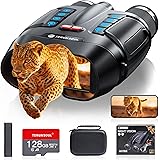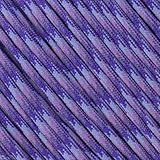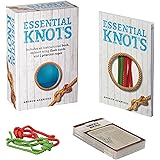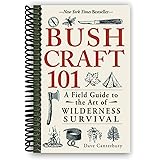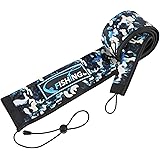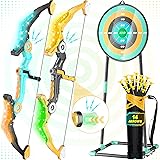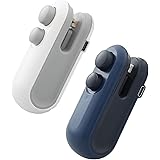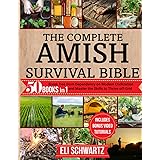Mastering Survival Medicine: Essential Skills for Every Family
As highlighted in the video above, understanding survival medicine is absolutely vital for anyone serious about preparedness. It’s not about replacing modern medical facilities but rather equipping yourself and your family with the knowledge and skills to handle health emergencies when professional help simply isn’t an option. This unique field focuses on self-reliance and basic care in austere environments, ensuring you’re ready for the unexpected.
Modern medicine operates with the expectation of advanced facilities and immediate access to specialized care. However, survival medicine recognizes that these luxuries might disappear during a crisis. Imagine a natural disaster, a widespread power outage, or any scenario where hospitals are overwhelmed or unreachable. In these situations, your ability to provide basic medical aid can be the difference between life and death. The goal is to transform every family into a unit with an embedded medic, capable of managing common injuries and illnesses with limited resources.
Why Survival Medicine Matters for Your Family’s Safety
The concept of survival medicine isn’t just for wilderness adventurers or extreme preppers; it’s a foundational skill set for every household. Unexpected events, from severe weather to pandemics, can disrupt our daily lives and critically limit access to healthcare. During such times, the nearest emergency room might be hours away, or even inaccessible.
Becoming a family medic means you gain the confidence to address immediate medical needs without external assistance. This level of self-reliance provides immense peace of mind, knowing that you can protect your loved ones when the systems we usually depend on falter. It empowers you to take charge, turning potential helplessness into decisive action, which is invaluable in any emergency situation.
Key Pillars of Survival Medicine Preparedness
Developing robust survival medicine capabilities requires focusing on several critical areas. These foundational skills are not overly complex but demand practice and a basic understanding of medical principles.
Bleeding Control and Trauma Care
Uncontrolled bleeding is one of the quickest ways for a critical situation to worsen. Knowing how to effectively stop bleeding is a primary skill in any emergency preparedness plan. This includes direct pressure, elevation, and the proper application of tourniquets for severe arterial bleeds.
Beyond bleeding, trauma care encompasses addressing various injuries like deep cuts, lacerations, and even impalements. Simple techniques, such as proper wound cleaning and dressing, can prevent complications. Having a well-stocked first aid kit with items like gauze, medical tape, and antiseptic wipes is fundamental.
Preventing and Treating Infections in Austere Environments
In a survival scenario, even a small cut can become a life-threatening infection if not properly managed. Preventing infection starts with basic hygiene, even when water is scarce. Learning how to thoroughly clean wounds and keep them covered is crucial.
The challenge of infectious disease prevention and treatment in austere environments, especially without easy access to antibiotics, is significant. Understanding common signs of infection (redness, swelling, pus, fever) and having knowledge of natural antiseptic alternatives or previously acquired, properly stored antibiotics (if ethically and legally obtained and managed) can be invaluable. This aspect of survival medicine highlights the importance of proactive measures.
Immobilizing Injuries: Splinting and Fractures
Broken bones or severe sprains can render an individual immobile and vulnerable. The ability to properly splint an injured limb is a vital skill for pain management and preventing further damage during transport or waiting for advanced care. You don’t need fancy medical equipment; everyday items like sticks, rolled newspapers, bandages, and duct tape can be fashioned into effective splints.
Learning basic anatomical knowledge helps in identifying potential fractures versus sprains, guiding your treatment. Practice applying different types of splints on family members (gently, of course) so that the technique becomes familiar and efficient under stress.
Hygiene in Austere Environments
Proper hygiene, often overlooked, is a cornerstone of preventing widespread illness in a survival situation. With limited water and sanitation, diseases can spread rapidly. This includes knowing how to purify water, safe waste disposal, and maintaining personal cleanliness as much as possible.
Simple practices like handwashing, even with hand sanitizer if water is unavailable, can significantly reduce the risk of infections. Educating your family on these hygiene principles is an essential step towards robust medical readiness.
Building Your Survival Medicine Mindset and Kit
Effective survival medicine is not just about physical skills; it deeply involves mental preparedness and having the right tools. Cultivating a resilient mindset is as important as any piece of gear.
The Right Mindset for Medical Readiness
In high-stress situations, panic can be more dangerous than the injury itself. A calm, collected mindset allows for clear thinking and effective action. This resilience is developed through education, practice, and understanding your limitations. Embracing a problem-solving attitude, even when resources are scarce, is a hallmark of strong medical self-reliance.
The ability to remain composed under pressure, to assess situations accurately, and to make quick decisions is cultivated over time. It’s about preparedness not just for the body, but for the mind, enabling you to effectively apply your survival medicine knowledge when it truly counts.
Essential Medical Supplies for Your Kit
A well-organized and comprehensive medical kit is indispensable. This goes beyond a standard first aid kit to include items relevant to the unique challenges of survival medicine. Think about wound closure strips, moleskin for blisters, burn gels, pain relievers, anti-diarrhea medication, and allergy medications. Consider also specific items for family members, such as prescription medications, asthma inhalers, or diabetic supplies.
Beyond the basics, think about specialized tools like surgical scissors, tweezers, and even a robust reference guide. Nurse Amy, mentioned in the video, designs various first aid kits tailored for survival scenarios, providing excellent starting points for assembling your own.
Continuous Learning and Training
Survival medicine is an evolving field, and continuous learning is key. Attending courses, reading comprehensive guides like “The Survival Medicine Handbook,” and participating in practical drills are excellent ways to enhance your skills. Regular practice ensures that techniques remain fresh in your mind and can be executed efficiently during a crisis.
Staying informed about new practices or resources, such as those offered by Dr. Joe and Nurse Amy of Doom and Bloom, will keep your knowledge sharp. It’s an ongoing journey of preparation and refinement, ensuring you are always ready to provide crucial survival medicine for your family.


